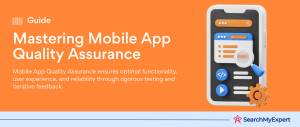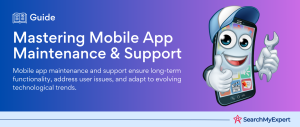Mobile applications development have become an integral part of our digital lives. As businesses continue to focus on delivering optimal user experiences, understanding and optimizing mobile app engagement has never been more vital. Dive into our detailed guide and discover how to cultivate lasting relationships with your app users.
Defining Mobile App Engagement
At its core, mobile app engagement reflects the depth of the connection users have with your application. This connection is gauged by tracking user activities and reactions to specific app features. Some key engagement indicators include:
- Duration of app usage
- Frequency of user actions
- Churn rate or daily uninstallations
The Essence of Mobile App Retention
In the world of mobile apps, retention refers to the capability of an app to sustain its user base over time. It’s not just about acquiring new users; it’s about making sure they continue to find value in your app. A high retention rate signifies that your strategies are resonating well with the users.
The Symbiosis Between Engagement and Retention
Mobile app engagement data is pivotal in understanding user preferences. This information paves the way for businesses to formulate informed strategies. By acting on this data, companies can enhance the user experience, fortifying user loyalty and, in turn, boosting retention rates.
Crucial Mobile App Engagement Metrics to Monitor
- Daily Uninstalls: It’s paramount to understand why users are uninstalling your app. Be it unmet expectations or intrusive ads; understanding the reasons can provide actionable insights.
- Retention Cohorts: Segmenting your user base helps in understanding user behavior patterns and adjusting strategies accordingly.
- App Stickiness: This metric, derived from the ratio of Daily Active Users to Monthly Active Users, showcases how frequently users are engaging with your app.
- Session Length & Interval: Monitoring the duration of user sessions and the time between sessions can help gauge the app’s value to its users.
Proven Strategies to Enhance Mobile App Engagement:
- Refine Onboarding: A user-friendly and value-driven onboarding process can set the stage for a lasting user relationship.
- Audience Segmentation: Cater to user preferences by segmenting your audience based on various parameters such as location, behavior, or app usage duration.
- Optimized Push Notifications: Personalized notifications, timed perfectly, can reignite user interest and drive engagement.
- Data-Driven Personalization: Utilize engagement data to tailor experiences for different user segments.
- Retargeting: Revive dormant user interest by presenting them with tailored ads and offers on different platforms.
- Loyalty Programs: Rewarding consistent users with exclusive offers or features can significantly boost user retention.
- Re-engagement Campaigns: Target inactive users with specific campaigns or feedback surveys to understand their concerns and address them.
Enhancing Engagement with App Features
As mobile applications evolve, the plethora of features they offer can play a significant role in driving user engagement. Here are some advanced ways you can leverage these features:
Interactive User Interface (UI)
An intuitive and interactive UI ensures users can navigate your app effortlessly. The easier it is for users to find what they’re looking for, the more likely they are to engage.
Real-time Feedback
Incorporate features where users can leave real-time feedback or reviews. This not only fosters a sense of community but also helps businesses to continually improve based on user feedback.
Gamification
Introducing game elements like scores, leaderboards, and badges can motivate users to engage more frequently with the app. Gamification can transform mundane tasks into exciting challenges.
Augmented Reality (AR) & Virtual Reality (VR) Integration
Immersive experiences powered by AR & VR can set your app apart from the competition, providing unique experiences that keep users coming back.
Chatbots and AI-driven Support
Instantaneous support powered by AI can significantly improve user satisfaction. Chatbots can handle a range of queries, ensuring users receive timely assistance.
Continuous Updates
Regularly updating the app based on user feedback and technological advancements keeps the user experience fresh and reduces the chances of users switching to competitors.
Integration with Social Media
Allowing users to share their app activities or achievements on social media can serve as organic marketing, drawing in their peers and expanding your user base.
Multi-language Support
In this globalized world, offering multi-language support ensures that your app appeals to a broader audience, catering to non-native speakers and expanding your app’s reach.
Building Trust with Transparency
Transparency is the bedrock of user trust. Here’s how you can ensure it:
Clear Data Usage Policies
Clearly outline how user data is collected, stored, and used. Ensure GDPR compliance and other regional data protection regulations.
Regular Communication
Keep your users in the loop regarding updates, changes, or potential downtime. This not only keeps users informed but also fosters trust.
Addressing Concerns Proactively
Actively seek feedback and address any concerns or criticisms users might have. This demonstrates commitment to user satisfaction.
Pushing the Boundaries with Innovative App Design
As technology and user expectations evolve, staying ahead in the app engagement game requires pushing the boundaries with innovative design and functionality. Here’s how to take your mobile app to the next level:
Adaptive UI/UX Design
In an era where devices vary in sizes and capabilities, adaptive design ensures that your app provides an optimal viewing and interaction experience across all platforms. It’s essential to ensure consistency in how users perceive and navigate your app, whether they’re on a tablet, smartphone, or wearable.
Incorporating Voice Commands
With the rise of voice assistants like Siri, Google Assistant, and Alexa, integrating voice command functionality can significantly enhance user experience. Users can navigate your app, fetch information, or execute tasks, all through simple voice commands.
Predictive Analytics Integration
Utilize machine learning to predict user behavior. By analyzing past user interactions, the app can provide content or features that a particular user is most likely to engage with, thereby personalizing the experience.
Dark Mode and Visual Comfort
With many apps and operating systems offering a dark mode, ensuring your app has this feature can be a game-changer. It not only provides visual comfort in low-light conditions but also conserves battery life on OLED screens.
Augmented Reality (AR) Shopping
For e-commerce apps, AR can redefine the shopping experience. Users can virtually “try on” products, be it clothing, accessories, or even furniture, giving them a more informed choice before purchasing.
Seamless Offline Capabilities
Internet connectivity can be inconsistent. Designing your app to function seamlessly offline ensures users remain engaged even without an active internet connection. Once back online, the app can sync and update accordingly.
Advanced Security Measures
With increasing concerns over data breaches and cyber threats, integrating advanced security measures like biometric authentication, end-to-end encryption, and regular security audits can bolster user trust.
Engaging with Community
Building a community around your app can take engagement to new heights:
User Forums and Discussion Boards
Create platforms where users can discuss features, share tips, and provide feedback. This not only gives you valuable insights but also fosters a sense of belonging among users.
Regular Webinars and Tutorials
Hosting regular webinars or tutorials about new features or potential use-cases can educate users and encourage deeper engagement.
Highlighting User-generated Content
Showcasing content or stories created by users, whether it’s a review, a testimonial, or a creative use of your app, can inspire others and foster community spirit.
Embracing Future Technologies for Sustained Engagement
As the digital landscape morphs with time, incorporating cutting-edge technologies and anticipating future trends will be crucial to maintaining and enhancing user engagement.
Blockchain Integration
Blockchain technology is steadily making inroads into various sectors. For apps, especially those handling transactions or sensitive information, integrating blockchain can offer unparalleled security, transparency, and trustworthiness.
Virtual Reality (VR) Experiences
While Augmented Reality (AR) enhances the real world with digital elements, Virtual Reality (VR) immerses users in a completely digital environment. For gaming, educational, or even real estate apps, VR can provide a uniquely engaging experience.
Internet of Things (IoT) Compatibility
As everyday objects get smarter and interconnected, apps that can seamlessly integrate and communicate with these devices offer users a cohesive and enriched experience. Imagine a health app that can sync with your smart fridge or a home automation app that learns from your preferences.
Machine Learning and User Insights
Beyond predictive analytics, leveraging machine learning can help apps understand user patterns, preferences, and pain points in real-time, allowing for instantaneous adjustments and personalizations.
5G Readiness
As global networks transition to 5G, ensuring your app is optimized for it can mean faster load times, seamless streaming, and an overall smoother user experience.
Haptic Feedback
Providing tactile feedback can make interactions within the app feel more intuitive and satisfying. Whether it’s the subtle buzz when a task is completed or a vibration pattern indicating a notification, haptic feedback can enhance user engagement significantly.
Sustainability and Social Responsibility
Modern users aren’t just looking for functionality; they’re also increasingly considering the ethical implications of their digital choices. Apps that prioritize sustainability, whether through eco-friendly initiatives or community support, can resonate deeply with a socially-conscious user base.
Building a Feedback Loop
While integrating advanced features is vital, maintaining a channel for continuous user feedback is equally important:
User Surveys
Periodic surveys can provide valuable insights into what users love about your app and areas that need improvement.
Beta Testing New Features
Before rolling out new features to the entire user base, consider a beta release to a smaller group. This not only helps in identifying potential issues but also gauges user reception.
Engage on Social Media
Establishing a robust presence on social media platforms allows for direct interactions with users, understanding their sentiments, and making them feel heard and valued.
Conclusion
In the fast-paced mobile app industry, you can’t rely on past achievements; you must always innovate and adapt. Continuous evolution, driven by both technological advancements and user feedback, is key to enduring success. Businesses and developers must cultivate a proactive approach, anticipate shifts in user behavior, and remain committed to delivering excellence at every step. With these strategies in play, apps can not only engage but also enchant users, fostering long-term loyalty and growth.
Don’t Miss Out! Dive into the best Mobile App Development Companies.
Table of Contents
Toggle






